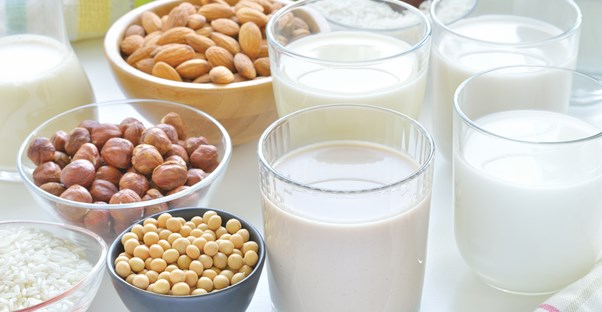Even though milk allergies and lactose intolerance can both cause you to avoid dairy products, they are actually very different conditions. Lactose intolerance is a digestive problem characterized by not being able to digest lactose, which is a sugar found in milk and other dairy products. However, a milk allergy is related to the immune system and causes your body to have an allergic reaction to the proteins found in milk.
Lactose Intolerance Symptoms
Lactose intolerance symptoms will typically present themselves between 30 minutes and 2 hours after consuming dairy products. These symptoms usually include bloating, stomach cramps, gas, diarrhea, and nausea. Lactose intolerance can be genetic, but it can also be due to damage in the small intestine. It is very common, with an estimated 30 to 50 million Americans suffering from the condition. Additionally, your risk for developing lactose intolerance will increase with age.
Milk Allergy Symptoms
A milk allergy is most common in infants and children, though it can develop at any age. This is the most common food allergy in children, but many children who are affected by a milk allergy will grow out of it by age five. Even though the symptoms for milk allergy can resemble lactose intolerance at first, they will quickly become much more severe with skin rashes, swelling in the throat or lips, and trouble breathing.
Diagnosing Lactose Intolerance and Milk Allergies
Even though a milk allergy is usually recognized as different from lactose intolerance because it is more severe, sometimes it is still difficult to diagnose correctly. Therefore, there are several tests that can be performed to reach a definitive diagnosis. To test for lactose intolerance, doctors use a hydrogen breath test or the stool acidity test. Both check for signs of undigested lactose. A milk allergy can be diagnosed through food allergy testing, which can include skin testing or taking a blood sample.
Treating Lactose Intolerance and Milk Allergies
Both conditions require you to avoid dairy products as much as possible, though many people with lactose intolerance are still able to digest foods containing low levels of lactose, such as hard cheeses or yogurt. However, if you have a milk allergy, you have to read labels to make sure to avoid foods that include the ingredients casein, whey, lactulose, lactalbumin, and ghee.
No matter which condition you are affected by, it is important to still make sure you are getting enough calcium in your diet. There are a variety of dairy-free foods that are high in calcium, such as almonds, spinach, and dark leafy green vegetables.
Lactose intolerance is a relatively harmless condition that is more inconvenient than it is dangerous. However, a milk allergy can be potentially life threatening, especially for young children. Therefore, it is important to see a doctor as soon as possible if you or your child is exhibiting symptoms of lactose intolerance or a milk allergy so you can receive the correct diagnosis and then begin an effective dietary treatment plan.




